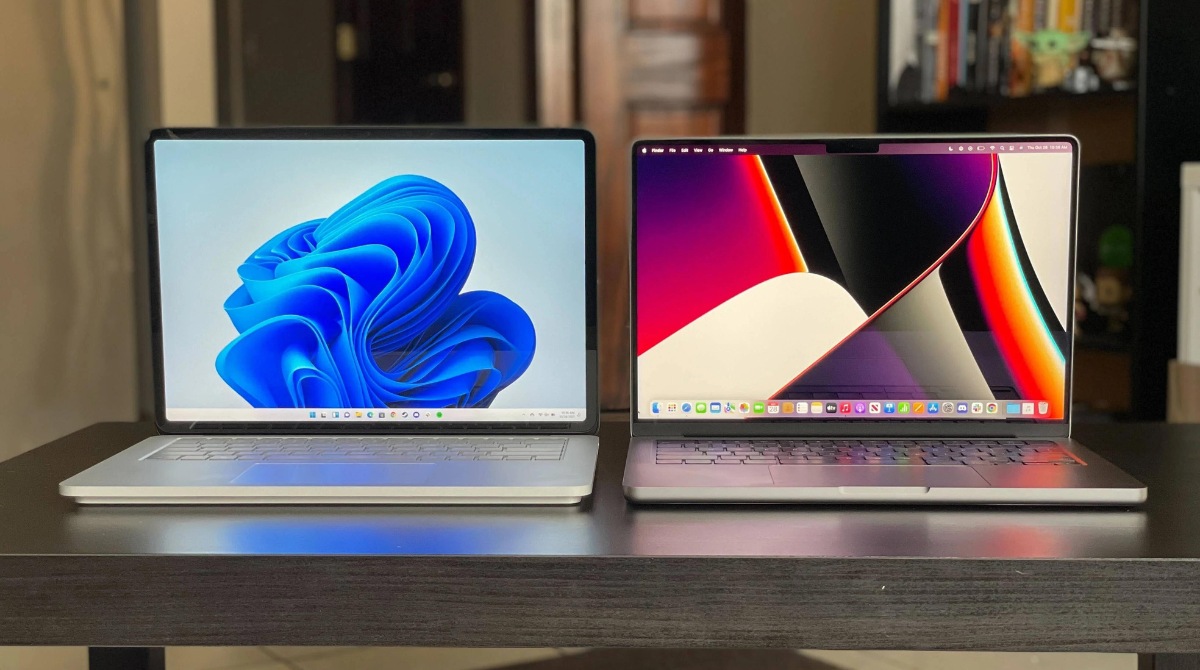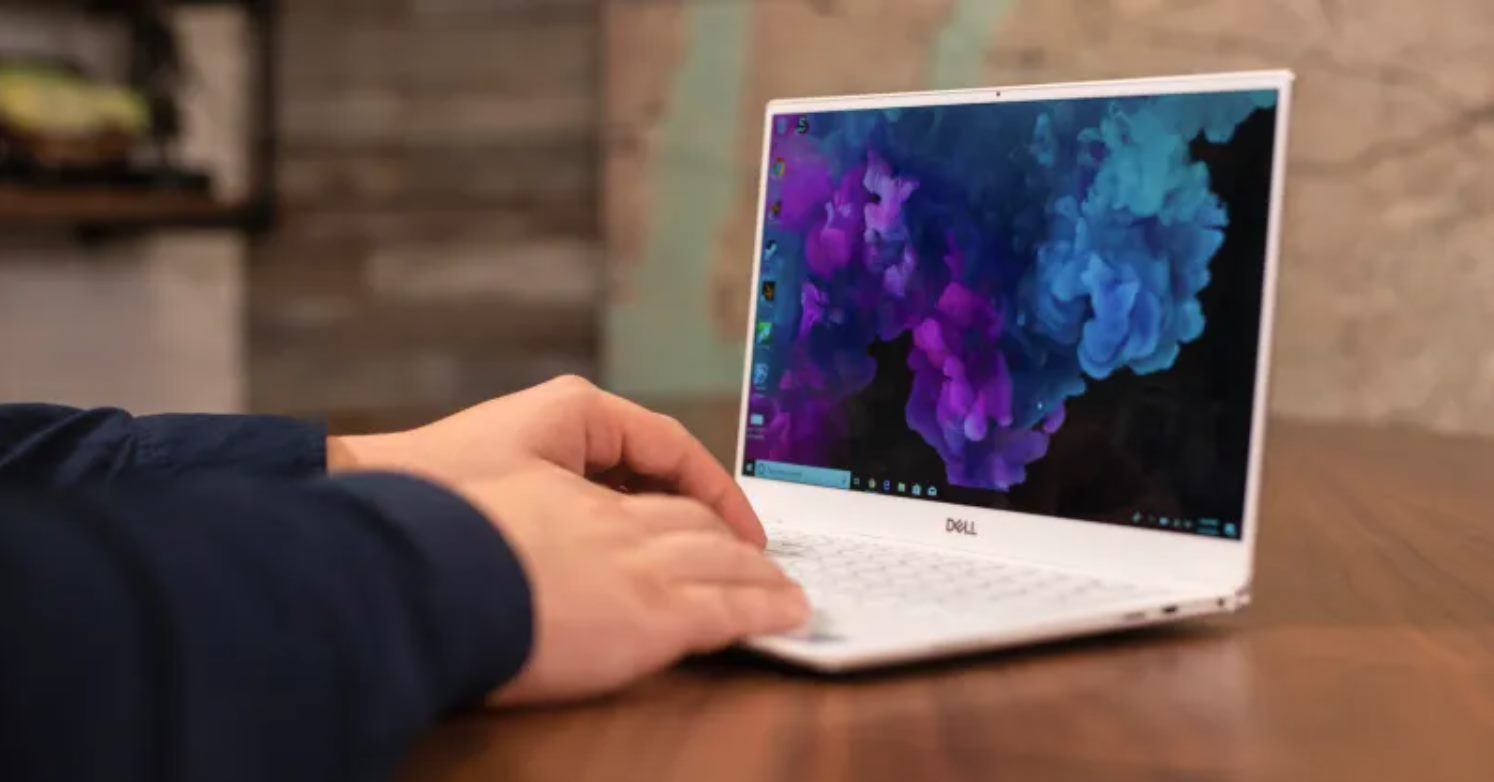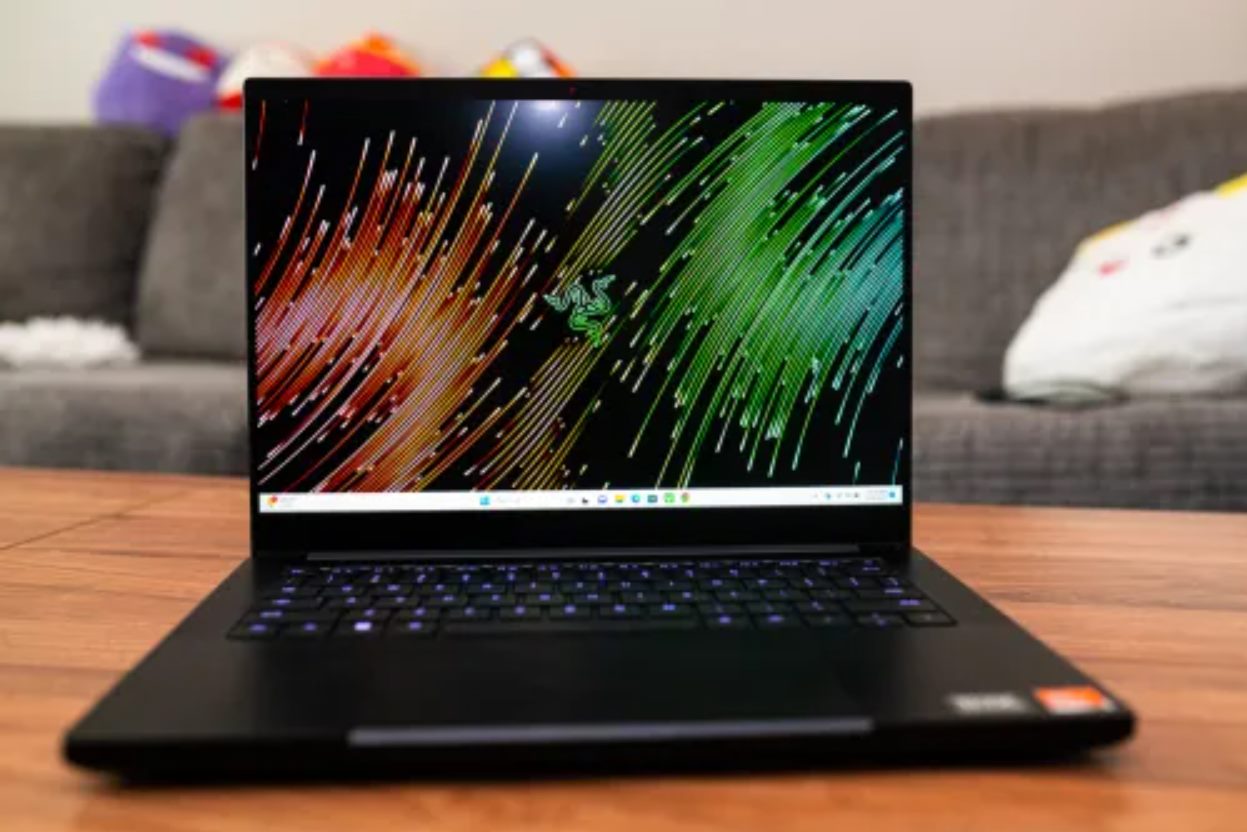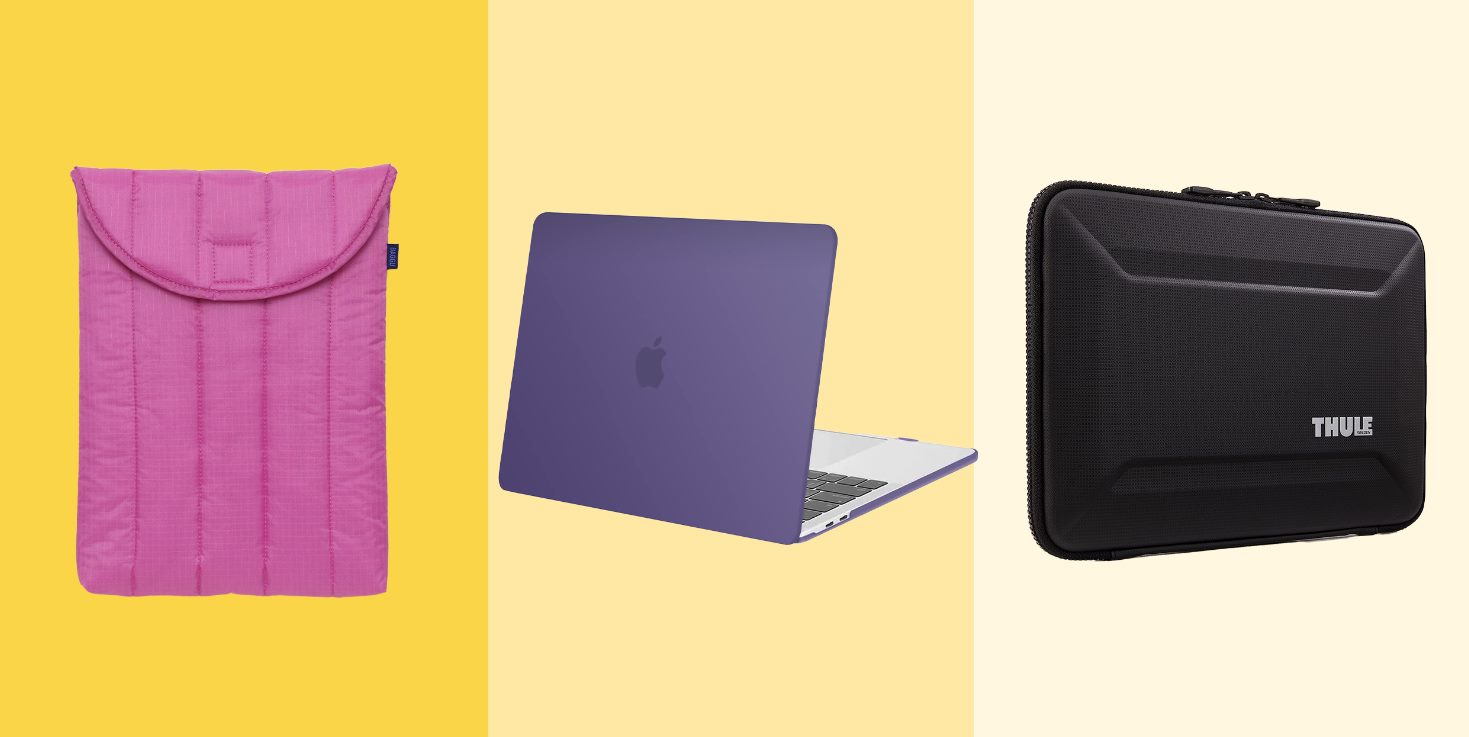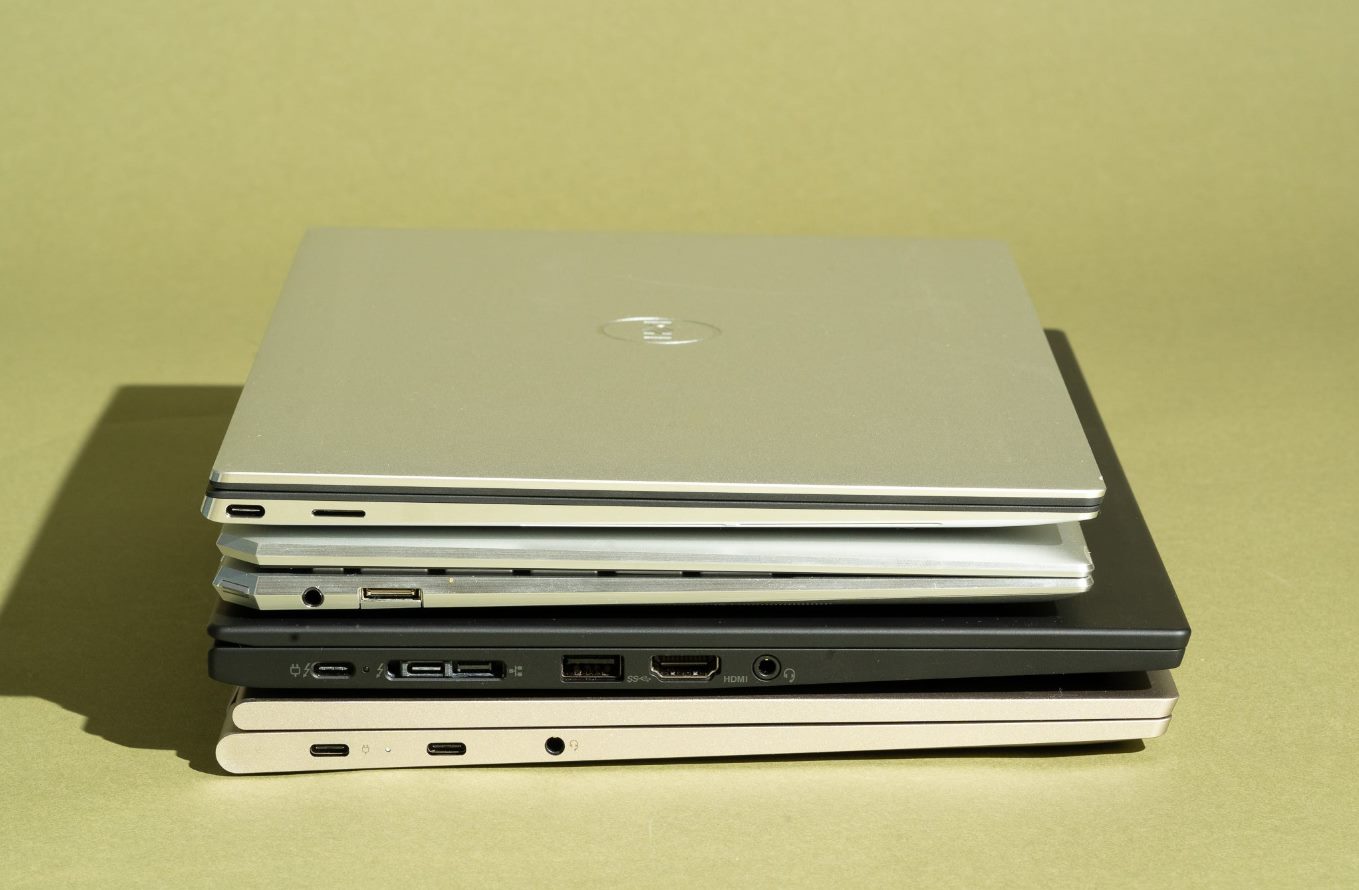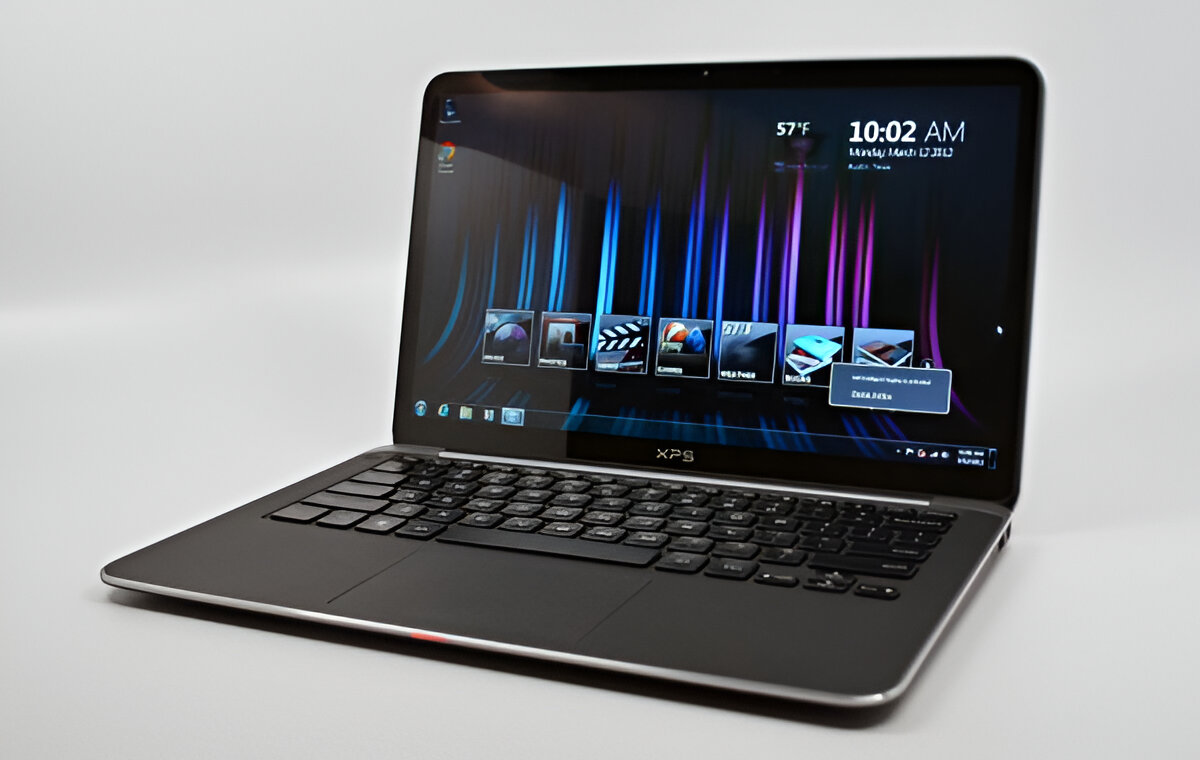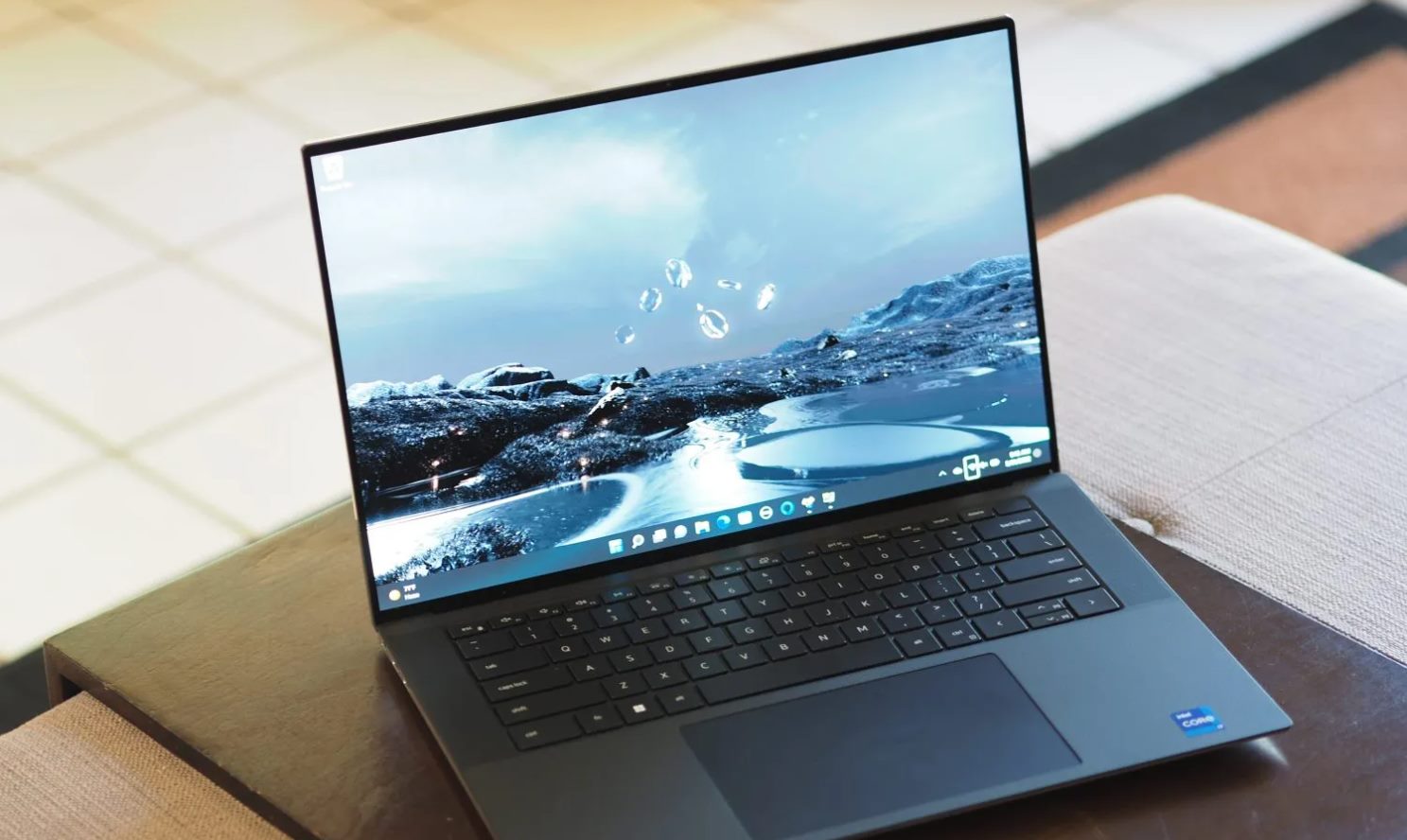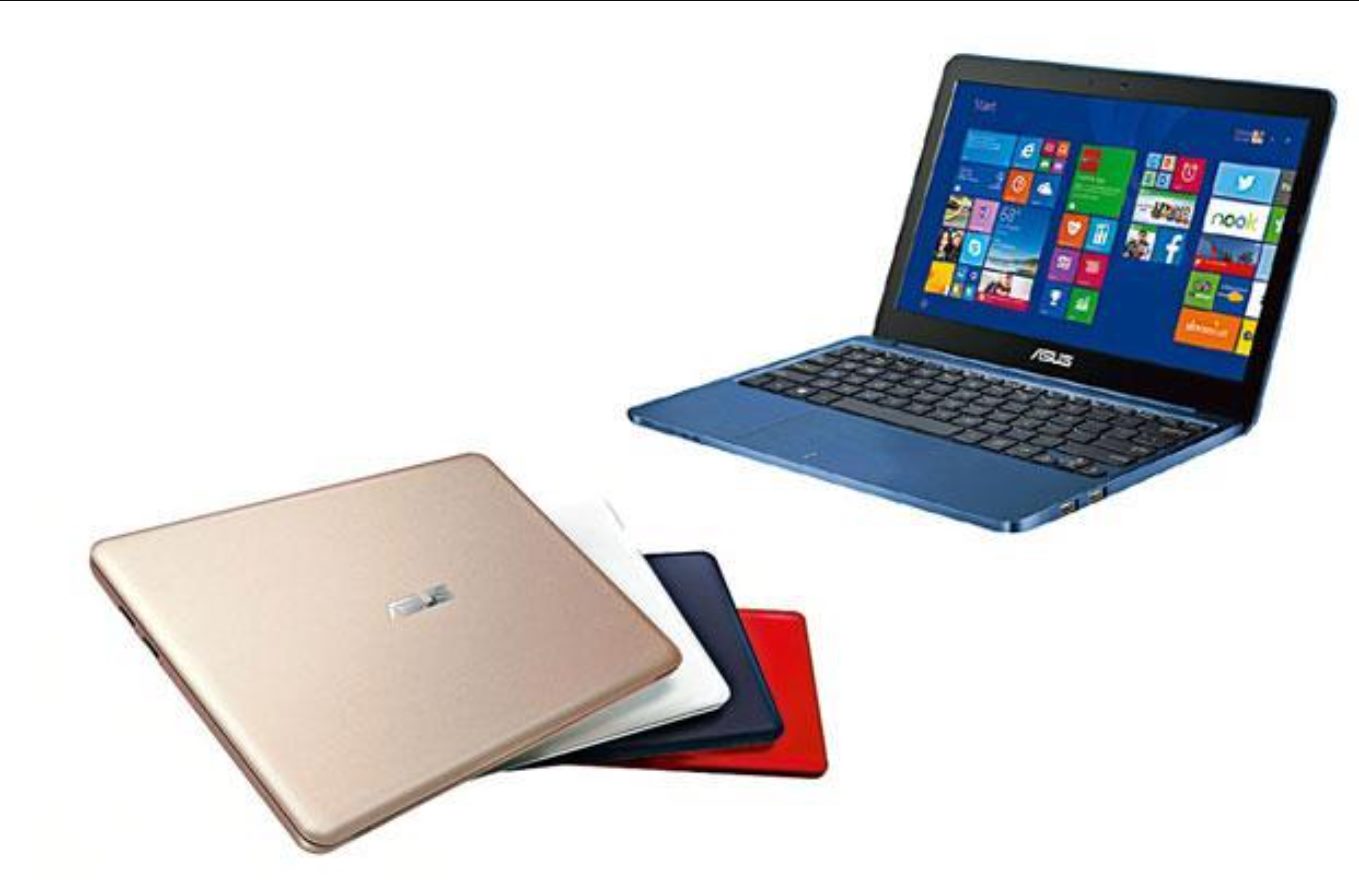Introduction
When it comes to ultrabooks, the MacBook Pro has long been regarded as the benchmark for sleek design, impressive performance, and seamless integration. However, the market has seen the emergence of formidable competitors that aim to challenge Apple’s dominance. In this article, we will explore the world of ultrabooks and compare them to the venerable MacBook Pro to determine which one comes out on top.
Ultrabooks are slim, lightweight laptops that offer a perfect balance between portability and functionality. They are highly sought after by professionals, students, and individuals who demand powerful computing in a compact form factor. The MacBook Pro, with its unibody aluminum enclosure and iconic Apple logo, has become a symbol of prestige and performance in the ultrabook category.
However, the landscape has evolved, and numerous contenders have emerged with their own compelling offerings. From the likes of Dell’s XPS lineup to the HP Spectre and Lenovo ThinkPad series, there is no shortage of options available for users seeking an alternative to the MacBook Pro. In this article, we will evaluate these ultrabooks across various categories including design and build quality, display, performance and specs, battery life, operating system and software, as well as price and overall value for money.
With each passing year, technology advancements result in increasingly capable and feature-rich ultrabooks. While the MacBook Pro has maintained its status as a top-tier choice, these competitors have raised the bar, offering comparable or even superior specifications and features. It’s an exciting time for consumers who are looking for a powerful and stylish ultrabook that meets their specific needs. So, let’s dive in and explore which ultrabook can surpass the MacBook Pro in terms of design, performance, and value for money.
Design and Build Quality
When it comes to design and build quality, the MacBook Pro has long been hailed as the gold standard. Its sleek aluminum body, precise craftsmanship, and iconic logo exude a sense of luxury and sophistication. The attention to detail is evident in every aspect, from the smooth edges to the perfectly aligned components. Apple’s commitment to creating a visually appealing and durable device is truly commendable.
However, the competition has caught up, offering their own impressive designs that rival the MacBook Pro. Dell’s XPS lineup, for example, features a stunning edge-to-edge display and a slim profile that gives it a modern and sleek appearance. The HP Spectre series also stands out with its ultra-thin design and premium materials like carbon fiber and ceramic.
When it comes to build quality, many of the top-tier ultrabooks now incorporate high-quality materials that ensure durability and longevity. The Lenovo ThinkPad series, known for its robust construction, provides MIL-SPEC durability and spill-resistant keyboards, making it an excellent choice for professionals on the go.
In terms of portability, the MacBook Pro offers exceptional ease of use with its compact size and lightweight design. It is an excellent choice for frequent travelers or those who prioritize mobility. The Dell XPS and HP Spectre series also provide a similar level of portability without compromising on performance and functionality.
Overall, while the MacBook Pro sets the benchmark for design and build quality, it is no longer the sole leader in this category. Competitors have stepped up their game, offering equally impressive and stylish ultrabooks that cater to different preferences and needs. Whether it’s the minimalistic elegance of the MacBook Pro or the modern appeal of the Dell XPS, consumers now have a wide range of options to choose from when it comes to design and build quality in the ultrabook market.
Display
The display is a crucial aspect of any ultrabook, as it directly impacts the user’s visual experience, whether they are working, streaming media, or enjoying games. The MacBook Pro has long been admired for its high-resolution Retina display, offering exceptional clarity, vibrant colors, and deep contrast.
However, rival ultrabooks have made significant strides in this area, offering displays that are equally as impressive, if not better. Dell’s XPS series, for instance, features InfinityEdge displays with razor-thin bezels, providing an immersive viewing experience. The HP Spectre series is no slouch either, boasting OLED displays with rich colors and deep blacks.
It’s worth mentioning that there are various display size options available among the ultrabook contenders. While the MacBook Pro typically offers 13 or 16-inch displays, other brands like HP and Dell offer a wider range of sizes, catering to different preferences and needs.
Moreover, some ultrabooks incorporate touch functionality, allowing users to navigate and interact with the display using their fingers or a stylus. This can be a significant advantage for those who prefer a more intuitive way of interacting with their device. The Microsoft Surface Laptop, for example, offers a touch-enabled display that seamlessly integrates with the Windows operating system, providing a versatile and interactive experience.
When it comes to resolution, most ultrabooks now offer at least a Full HD (1920×1080) display, with some even reaching 4K resolutions. Higher resolutions not only provide crisper visuals but also allow professionals in fields such as design and photography to work with greater detail and precision.
In summary, while the MacBook Pro’s Retina display remains top-notch, competitors have stepped up their game, offering equally impressive, if not superior, displays. From Dell’s InfinityEdge displays to HP’s OLED panels, users now have a range of high-quality options to choose from. The availability of different display sizes and touch functionality further enhances the overall user experience, providing flexibility and customization to meet individual preferences.
Performance and Specs
Performance is a key consideration when choosing an ultrabook, as it determines how smoothly and efficiently the device can handle tasks and applications. Historically, the MacBook Pro has been lauded for its powerful performance, thanks to the combination of Apple’s custom-designed processors and optimized software.
However, rival ultrabooks have closed the gap considerably in terms of performance. Many now feature Intel’s latest-generation processors, providing excellent processing power and multitasking capabilities. The Dell XPS series, for example, offers options for Intel Core i7 processors, ensuring seamless performance even for demanding tasks like video editing or gaming.
Another crucial factor in performance is the amount of RAM and storage available. The MacBook Pro typically offers generous amounts of RAM, allowing for smooth multitasking and efficient handling of intensive applications. The Dell XPS and HP Spectre series also offer configurations with ample RAM and solid-state drives, ensuring speedy performance and quick boot-up times.
In terms of graphics capabilities, many ultrabooks now integrate dedicated graphics cards, allowing for improved performance in tasks such as gaming and graphic design. This is particularly evident in the Dell XPS series and the Microsoft Surface Book, which offer optional dedicated graphics cards from NVIDIA.
Furthermore, the operating system plays a crucial role in the overall performance of an ultrabook. While the MacBook Pro benefits from Apple’s macOS, which is known for its efficiency and optimization, competitors like Dell, HP, and Lenovo offer ultrabooks running on Windows 10, which provides a vast ecosystem of applications and robust compatibility.
Overall, the MacBook Pro still retains its reputation for strong performance due to Apple’s integrated hardware and software approach. However, rival ultrabooks have caught up, offering powerful processors, ample RAM and storage, and even dedicated graphics cards. It is now easier than ever to find an ultrabook that matches or surpasses the MacBook Pro in terms of performance and specifications, providing users with the power and speed they need to tackle any task.
Battery Life
Battery life is a crucial aspect to consider in an ultrabook, as it directly impacts the device’s portability and usability. The MacBook Pro has a reputation for delivering excellent battery life, allowing users to work or enjoy multimedia content for extended periods without needing to be plugged in.
However, competitors have made significant strides in this area as well, offering ultrabooks with impressive battery longevity. Dell’s XPS series, for example, boasts all-day battery life, ensuring that users can remain productive on the go without the need for frequent charging. HP’s Spectre series also excels in this regard, providing extended battery performance, enabling users to get through a full day of work or entertainment without interruption.
It’s important to note that battery life can vary based on usage and configuration. Factors such as display brightness, the intensity of resource-demanding tasks, and power management settings can all impact how long an ultrabook can last on a single charge.
In addition to overall battery life, charging speed is also a consideration. Many ultrabooks now come with fast charging capabilities, allowing users to quickly recharge their devices whenever needed. The Lenovo ThinkPad lineup, for instance, offers rapid charging technology, enabling users to charge their ultrabooks to a certain percentage within minutes.
Furthermore, some ultrabooks come with power-saving features and energy-efficient components that help maximize battery life. Intel’s Evo platform, which is featured in a range of ultrabooks, is specifically designed to optimize power consumption, ensuring longer battery life without sacrificing performance.
In summary, while the MacBook Pro has established itself as a leader in terms of battery life, competitors have made significant progress in this aspect as well. From the all-day battery life of the Dell XPS series to the extended battery performance of the HP Spectre series, users now have a variety of options that offer impressive battery longevity. Fast charging capabilities and power-saving features further enhance the overall battery experience, ensuring that users can stay productive and entertained for longer periods without the need for frequent charging.
Operating System and Software
The operating system and software ecosystem play a vital role in the overall user experience of an ultrabook. The MacBook Pro, running on Apple’s macOS, offers a seamless and user-friendly interface that is renowned for its stability and optimization. The integration between Apple’s hardware and software ensures a smooth and efficient workflow for users.
On the other hand, competitors like Dell, HP, and Lenovo primarily offer ultrabooks running on Microsoft’s Windows 10 operating system. Windows 10 provides a wide range of compatibility with software and a robust ecosystem of applications, making it a versatile choice for users with diverse needs.
One significant advantage of Windows-based ultrabooks is the extensive software availability. Whether it is professional software applications, creative tools, or gaming platforms, Windows offers a broader selection compared to macOS. This flexibility appeals to professionals in fields such as design, engineering, and content creation, who rely on specific software for their work.
Moreover, Windows 10 provides greater customization options, allowing users to personalize and tailor their ultrabook’s settings, interface, and workflow to their preferences. This level of customization can enhance productivity and efficiency for users who require a personalized computing experience.
Security is another aspect to consider in the operating system. Apple’s macOS is known for its robust security features, including built-in encryption, secure boot, and malware protection. Windows 10, on the other hand, has made significant strides in recent years to improve security, offering features such as Windows Hello facial recognition and BitLocker encryption.
One key consideration when choosing an ultrabook based on the operating system is ecosystem compatibility. For users already invested in the Apple ecosystem, including iPhones, iPads, and iCloud, the MacBook Pro offers seamless integration and synchronization of data across devices. On the other hand, Windows-based ultrabooks provide a more inclusive ecosystem that is compatible with various devices and platforms, offering cross-platform capabilities and versatility.
Overall, the choice between macOS and Windows 10 depends on individual preferences, software requirements, and ecosystem compatibility. The MacBook Pro excels in its seamless integration and optimized performance, while Windows-based ultrabooks provide a wider range of software options, customization possibilities, and compatibility with diverse devices. Choosing the right operating system and software ecosystem ultimately depends on the specific needs and preferences of the user.
Price and Value for Money
Price is an important consideration when choosing an ultrabook, as it determines the value for money that a user gets from their purchase. The MacBook Pro is often associated with a premium price tag, reflecting its reputation for quality and performance.
However, competitors have entered the market with ultrabooks that offer competitive pricing while delivering comparable or even superior specifications. Dell’s XPS series, for example, provides a range of options at different price points, allowing users to choose a configuration that meets their budget and requirements. Similarly, HP’s Spectre and Lenovo’s ThinkPad series offer a range of models with different pricing options, allowing users to find a product that fits their budget.
Value for money goes beyond just the initial purchase cost. It also includes factors such as the included features, warranty coverage, after-sales support, and longevity of the product. Dell, HP, and Lenovo, as established manufacturers, typically offer robust warranty and customer support options, ensuring that users have peace of mind and assistance in case of any issues.
Furthermore, some ultrabook models offer additional value through bundled accessories or software packages. These can include items such as stylus pens, docking stations, or premium software subscriptions. Considering the added value that these bonuses provide can be a deciding factor when comparing the MacBook Pro to its competitors.
It’s also worth mentioning that the availability of different configurations and options in pricing allows users to find an ultrabook that meets their specific needs while staying within their budget. This flexibility in pricing gives consumers the opportunity to choose the right balance between performance, features, and affordability.
In summary, while the MacBook Pro is often associated with a higher price point, competitors have made significant strides in terms of pricing while delivering comparable performance and specifications. Dell, HP, and Lenovo, among others, offer a range of options at various price points, ensuring that consumers can find an ultrabook that provides excellent value for money. Considering factors such as included features, warranty coverage, customer support, and the availability of bundled accessories or software can further enhance the overall value proposition of an ultrabook.
Conclusion
When comparing the MacBook Pro to its competitors in the ultrabook market, it is evident that the landscape has evolved and the gap has narrowed. While the MacBook Pro has long been regarded as the benchmark for sleek design, impressive performance, and seamless integration, rival ultrabooks have emerged with their own compelling offerings that challenge Apple’s dominance.
In terms of design and build quality, the MacBook Pro sets a high standard with its sleek aluminum body and attention to detail. However, competitors like Dell’s XPS series and HP’s Spectre lineup have made significant strides in this area, offering stylish designs and durable constructions that rival Apple’s offering.
When it comes to display, the MacBook Pro’s Retina display remains top-notch, but competitors are catching up with stunning displays like Dell’s InfinityEdge and HP’s OLED panels, offering vibrant colors and slim bezels.
Performance and specs, once the MacBook Pro’s stronghold, are now equally matched by competitors. Ultrabooks powered by Intel processors, ample RAM, and solid-state drives deliver impressive performance for even demanding tasks.
Battery life is a crucial factor for portable devices, and while the MacBook Pro excels in this area, competitors like Dell and HP offer all-day battery life, meeting the needs of users on the go.
The choice between macOS and Windows 10 for the operating system depends on individual preferences and software requirements. Windows-based ultrabooks offer a wider range of software compatibility and customization options, while the MacBook Pro provides seamless integration within the Apple ecosystem.
Finally, when considering price and value for money, competitors have entered the market with ultrabooks that offer comparable performance at more competitive price points, allowing consumers to find an ultrabook that meets their budget and requirements without compromising on quality.
In conclusion, while the MacBook Pro remains a solid choice and a symbol of excellence, the ultrabook market offers a vast array of options that can surpass it in certain aspects. Whether it’s the design, display, performance, battery life, operating system, or value for money, consumers now have the luxury of choosing an ultrabook that perfectly suits their needs, preferences, and budget.







